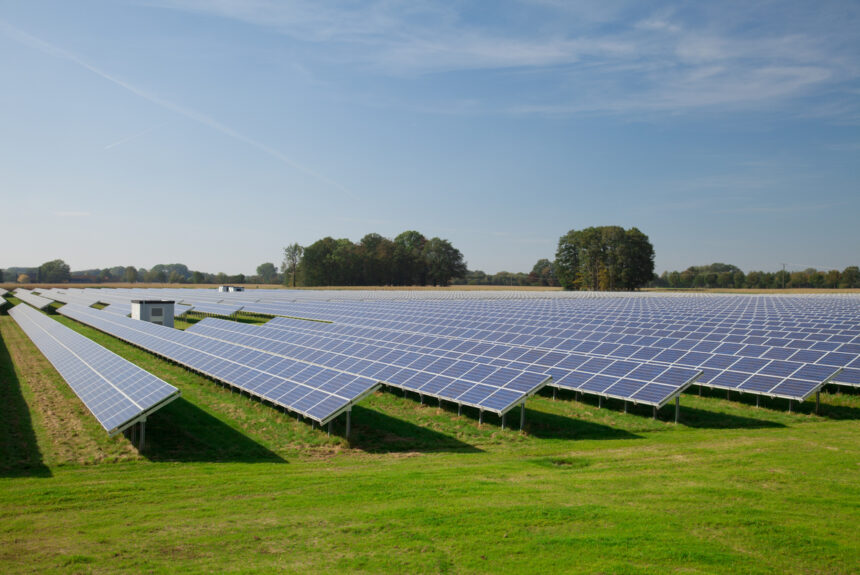In a move that could significantly hamper America’s energy sector, threaten global energy security, and, ironically, increase global greenhouse gas emissions, the White House recently announced that it is reevaluating the climate criteria of liquified natural gas (LNG) exports. While the potential decision to increase regulatory barriers for energy trade would be regrettable, it represents a broader problem. Many industrialized nations have begun to shift away from free trade and toward protectionism. While seemingly well-intentioned, closing off economic opportunity to the rest of the world could slow down the adoption of clean technologies and slow upward mobility. Addressing the economic and environmental challenges of the future will best be accomplished through free trade and free markets, not protectionism and isolation.
>>>READ: Free Markets Can Drive Prosperity Up, Emissions Down
After experiencing rapid economic growth in the era of globalization, the U.S. has for several years begun to pivot parts of its economic strategy to reshoring domestic production of key industries. While protectionism has always been a part of U.S. politics, it was more formally embraced in 2018 when the Trump administration unveiled a series of tariffs, including one that taxed foreign steel at 25%. These tariffs increased costs and led to an estimated 75,000 manufacturing jobs lost, according to the Peterson Institute for International Economics. Since that time, the Biden administration has scaled back tariffs on EU, Japanese, and Ukrainian steel, but has kept many of these Trump-era protections in place, which cost consumers $51 billion annually.
Meanwhile, the Biden administration has imposed protectionism of its own with lucrative tax credits and subsidies for American-made minerals and products that are intended to reshore a domestic base of green manufacturing and energy production. Just as the Trump tariffs before them, these policies may be well-intentioned, but will ultimately kneecap long-term global climate progress by increasing the cost of action.
Subsidies designed to favor domestic solar panel producers, for instance, come at the expense of increasing regulatory barriers for foreign manufacturers who may be able to deliver more cost-effective products to consumers. Tariffs on steel and aluminum increase the cost of electric vehicles, which are heavier than their internal combustion counterparts, and thus slow down the adoption of EVs on roadways. Natural gas replacing coal is the primary reason America is a global leader in emissions reductions and U.S. LNG exports could do the same abroad—all while increasing energy affordability and security. Excessive regulations that curtail LNG exports could threaten this progress.
>>>READ: Abundant Energy From Free Markets
For any climate policy to be effective, it must be economically favorable for consumers. Only when it is in their best interest will countries or families begin to invest in environmentally friendly products or cleaner sources of energy.
Free trade lowers the cost barrier to accomplish these objectives by raising living standards globally. As Scott Lincicome and Alfredo Carrillo Obregon of the Cato Institute point out, “Between 1993 and 2018, the share of working individuals in low‐ and middle‐income countries living in extreme poverty (less than $1.90 a day, in purchasing power parity terms) fell from 41.7 to 9.8 percent—a decline of about 550 million people.” Job growth during this time was not primarily seen in sweatshops and manufacturing, but instead in retail, construction and tourism, and as a result real wages nearly tripled globally.
In addition to bettering economic opportunity (which in itself is good for the climate), free trade offers unique benefits to the environment. While some critics believe that globalization and free trade create a “race to the bottom” where environmental performance is sacrificed for profit, quite the opposite is true.
Trade may increase production of goods which leads to greater air pollution in the interim, but it provides greater wealth to address environmental challenges and allows countries to specialize, which yields environmental benefits in the long term by making supply chains and manufacturing more efficient. Free and open economies allow businesses to sell their environmentally friendly, cost-competitive products to more customers. For instance, iron smelters have the choice to purchase metallurgical coke from Argentina instead of Australia, where coke production is three times as dirty. Meanwhile, businesses also have the ability to buy Finnish lumber which emits about one-thirtieth the carbon, per dollar produced, of wood from Indonesia.
Climate change is an international challenge, and as a result, its solutions must be globally focused. Rather than increasing costs for clean technologies and adding artificial barriers for emerging markets to access industrialized ones, leaders should turn to free trade to meet the world’s economic, energy, and climate needs.
The views and opinions expressed are those of the author’s and do not necessarily reflect the official policy or position of C3.
